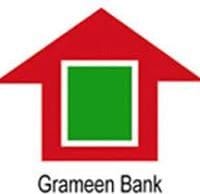Microfinance-Credit lending models
Microfinance institutions are using various Credit Lending Models throughout the world. Some of the models are listed below.
Associations :
This is where the target community forms an ‘association’ through which various microfinance (and other) activities are initiated. Such activities may include savings. Associations or groups can be composed of youth, or women; they can form around political/religious/cultural issues; can create support structures for microenterprises and other work-based issues.
In some countries, an ‘association’ can be a legal body that has certain advantages such as collection of fees, insurance, tax breaks and other protective measures. Distinction is made between associations, community groups, peoples organizations, etc. on one hand (which are mass, community based) and NGOs, etc. which are essentially external organizations.
Bank Guarantees :
As the name suggests, a bank guarantee is used to obtain a loan from a commercial bank. This guarantee may be arranged externally (through a donor/donation, government agency etc.) or internally (using member savings). Loans obtained may be given directly to an individual, or they may be given to a self-formed group.
Bank Guarantee is a form of capital guarantee scheme. Guaranteed funds may be used for various purposes, including loan recovery and insurance claims. Several international and UN organizations have been creating international guarantee funds that banks and NGOs can subscribe to, to onlend or start microcredit programmes.
Community Banking :
The Community Banking model essentially treats the whole community as one unit, and establishes semi-formal or formal institutions through which microfinance is dispensed. Such institutions are usually formed by extensive help from NGOs and other organizations, who also train the community members in various financial activities of the community bank. These institutions may have savings components and other income-generating projects included in their structure. In many cases, community banks are also part of larger community development programmes which use finance as an inducement for action.
Village Banking :
Village banks are community-based credit and savings associations. They typically consist of 25 to 50 low-income individuals who are seeking to improve their lives through self-employment activities. Initial loan capital for the village bank may come from an external source, but the members themselves run the bank: they choose their members, elect their own officers, establish their own by-laws, distribute loans to individuals, collect payments and savings. Their loans are backed, not by goods or property, but by moral collateral: the promise that the group stands behind each individual loan.
